John Mayall, legendary blues guitarist and founder of John Mayall & the Bluesbreakers, died on Monday at the age of 90, Vanity Fair reports.
Born in Macclesfield, England in 1933, Mayall taught himself to play the piano, guitars and harmonica as a kid. After graduating from the Manchester College of Art, he maintained a side hustle playing with local musicians. In 1963, he founded the Bluesbreakers with drummer Peter Ward, bassist John McVie (who would later join Fleetwood Mac) and guitarist Bernie Watson. Together they helped bring the sound of American Delta blues — artists like Muddy Waters, John Lee Hooker and Elmore James — to English venues and audiences. In 1965, Eric Clapton, who’d quit the Yardbirds, joined the lineup. “The blues fitted in with the early ’60s, the social way of life at the time,” Mayall explained to The Guardian in 2014. “Things were changing anyway – in fashion, art, political views. … It happened here, rather than in America, because at the time, the scene in America was racially segregated – over there, never the twain would meet. In Europe, however – not just England – the Black blues began to be heard by an audience that was not listening to them in America. We discovered Elmore James, Freddie King, JB Lenoir, and they spoke to our feelings, our life stories and that was it. Hooked.”
see full post...
Carey Frank “Carei” Thomas (* July 23, 1938 in Pittsburgh; † May 28, 2020 in Minneapolis) was an American jazz musician (piano, composition, also vocals) who was active in a six-decade career as a jazz pianist, composer, educator, and organizer of art exhibitions in Minneapolis.
Thomas spent his teenage and early adult years in Chicago, where he met one of his idols, the bandleader and pianist Sun Ra. There he founded a doo-wop group and worked with the Association for the Advancement of Creative Musicians. After serving two years overseas in the US Army, Thomas moved to Minneapolis in 1972 to study music education and therapy at the University of Minnesota. He was involved in many organizations in the Twin Cities in the years that followed, serving as music director for the Interact Center for Visual and Performing Arts and as a music educator at the West Bank School of Music and St. Paul’s High School for Recording Arts. In 1993, he was diagnosed with Guillain-Barré syndrome, and invented new ways to play the piano. The nerve disorder required years of physical therapy and limited his finger movements.
Thomas was known for developing experimental and genre-bending pieces of music under his own name and with groups and collectives such as Zeitgeist, The Elders, and the Neighborhood Ensemble. He also pioneered musical concepts such as controlled improvisation and sound generation. In 2000, Thomas recorded the album Minding Our Bid’ness with his Feel Free Ensemble at the Bryant-Lake Bowl Theater in Minneapolis, which featured saxophonist George Cartwright, among others. On it he played his own compositions such as “Tippy/One Ahead (For All Victims of Violence)” and “Invention #1: Way North of the Order (Dedicated to Paul Bley and Ornette Coleman)”. In 2003 he participated in an album by the formation Fat Kid Wednesdays; around 2005 he released his last album under his own name, Sound Window(s), which was released on Innove Records.[4] In 2011 he published “Compositions and Concepts” with notes and stories behind his pieces from 1959. Thomas died in late May 2020 when complications of hypertrophic cardiomyopathy occurred after a fall, leading to heart failure.
Jazz singer José James, who performed with Thomas’ many Twin Cities ensembles and was his student, called him “a brilliant pianist, composer and mentor to a generation of artists”. 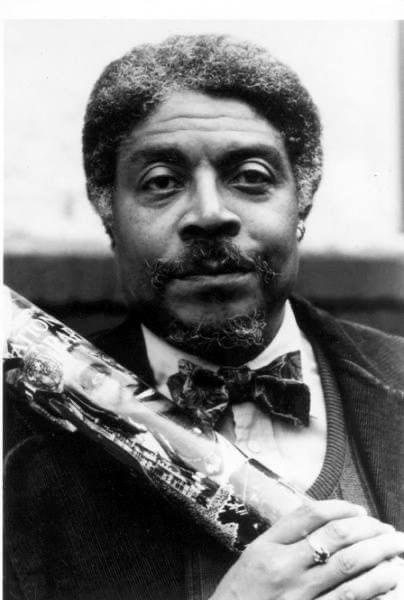
A city-sized magnetized neutron star spinning around 30 times a second. Known as the Crab Pulsar, it is the bright spot in the center of the gaseous swirl at the nebula’s core. About 10 light-years across, the spectacular picture of the Crab Nebula (M1) frames a swirling central disk and complex filaments of surrounding and expanding glowing gas. The picture combines visible light from the Hubble Space Telescope in red and blue with X-ray light from the Chandra X-ray Observatory shown in white, and diffuse X-ray emission detected by Imaging X-ray Polarimetry Explorer (IXPE) in diffuse purple. The central pulsar powers the Crab Nebula‘s emission and expansion by slightly slowing its spin rate, which drives out a wind of energetic electrons. The featured image released today, the 25th Anniversary of the launch of NASA’s flagship-class X-ray Observatory: Chandra.
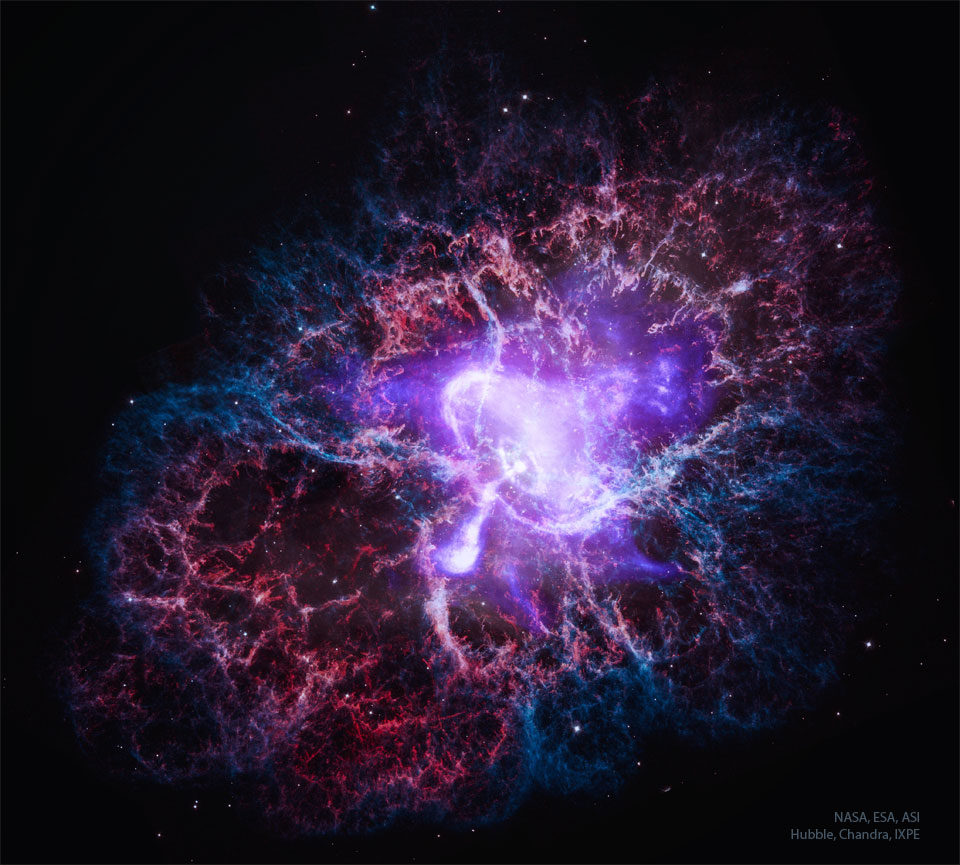
Montez Coleman, a sharp and ebullient drummer best known for his close association with Roy Hargrove, died on Jan. 14 at Barnes-Jewish Hospital in St. Louis, MO.
He was 48. The cause was congestive heart failure, his wife, Carlynda Coleman, tells WBGO.
An exemplar and proud exponent of the jazz community in St. Louis, Coleman radiated crisp authority as a drummer, exerting lift and momentum in any setting. “He had a natural swing that made you feel good right away,” bassist Vicente Archer, a regular partner, tells WBGO. “On a personal level and musically, you knew when he was in the room. He was a loving person, and he always had your back, too.”
Among Coleman’s steady affiliations was a group with Archer and pianist Bruce Barth, which recorded a forthcoming album last summer, one day after a gig at Mezzrow in New York. “I took an immediate liking to Montez,” says Barth, whose first encounter with Coleman was at Jazz St. Louis 20 years ago. “He had such a deep groove and this exuberant, positive energy that was infectious.”
see full post...Steve Lacy (born Steven Norman Lackritz; July 23, 1934 – June 4, 2004) was an American jazz saxophonist and composer recognized as one of the important players of soprano saxophone. Coming to prominence in the 1950s as a progressive dixieland musician, Lacy went on to a long and prolific career. He worked extensively in experimental jazz and to a lesser extent in free improvisation, but Lacy’s music was typically melodic and tightly-structured. Lacy also became a highly distinctive composer, with compositions often built out of little more than a single questioning phrase, repeated several times.
The music of Thelonious Monk became a permanent part of Lacy’s repertoire after a stint in the pianist’s band, with Monk’s works appearing on virtually every Lacy album and concert program; Lacy often partnered with trombonist Roswell Rudd in exploring Monk’s work. Beyond Monk, Lacy performed the work of jazz composers such as Charles Mingus, Duke Ellington and Herbie Nichols; unlike many jazz musicians he rarely played standard popular or show tunes.
see full post...William Thomas “Champion Jack” Dupree (July 23, 1909 or July 4, 1910 – January 21, 1992) was an American blues and boogie-woogie pianist and singer. His nickname was derived from his early career as a boxer. Dupree was a New Orleans blues and boogie-woogiepianist, a barrelhouse “professor”. His father was from the Belgian Congo and his mother was part African Americanand Cherokee. His birth date has been given as July 4, July 10, and July 23, 1908, 1909, or 1910; the researchers Bob Eagle and Eric LeBlanc give July 4, 1910.
see full post...William James Edwards Lee III (July 23, 1928 – May 24, 2023 Snow Hill, AL) was an American jazz bassist and composer, known for his collaborations with Bob Dylan and Aretha Franklin, his compositions for jazz percussionist Max Roach, and his session work as a “first-call” musician and band leader to many of the twentieth-century’s most significant musical artists, including Duke Ellington, Billie Holiday, Harry Belafonte, Peter, Paul and Mary, Simon and Garfunkel, Judy Collins, Arlo Guthrie, Billy Strayhorn, Woody Guthrie, and Pete Seeger, among many others.
Lee recorded three critically acclaimed albums at the Black independent label Strata-East Records: (1) The Descendants of Mike and Phoebe: A Spirit Speaks; (2) The Brass Company: Colors, in collaboration with his two sisters; and (3) The New York Bass Violin Choir, a collaboration of seven basses, which JazzdaGama described as “a true Holy Grail for all musicians,” and which Lee classified as one of his “narrative folk, jazz operas” along with “One Mile East,” both of which were inspired by memories of the former slave quarters near his childhood home. Stagings at New York City’s Central Park, Lincoln Center and Newport Jazz Festival followed all of these recordings.
Trumpeter Theo Croker called Lee “… [O]ne of the great American composers of our time. His harmonic beauty was unique and his choice of melody always struck a chord inside of the listener. He was a masterful orchestrator of imagery.” In 2008, The New York Times noted that “His music has the complex harmonies of bebop and hard bop, but it also has a sincere, down-home, churchy feel. His passages move to interesting and unexpected places, but they resolve before long in a way that is simple and sincere, earthy and somehow very satisfying.”
Featured in more than 250 record albums, and on such songs as “Puff the Magic Dragon” and “Mr. Tambourine Man,” Lee also appeared in several movies made by his son, acclaimed film-maker Spike Lee, in addition to creating original soundtracks for She’s Gotta Have It (1986), School Daze (1988), Do the Right Thing (1989), and Mo’ Better Blues (1990).
see full post...In this week’s Hubble Picture of the Week we are treated to a wonderfully detailed snapshot of NGC 3430. A spiral galaxy, it lies 100 million light-years from Earth in the constellation Leo Minor. Several other galaxies are located relatively nearby to this one, just out of frame; one is close enough that gravitational interaction is driving some star formation in NGC 3430.
That NGC 3430 is such a fine example of a galactic spiral may be why it ended up as part of the sample that Edwin Hubble used to define his classification of galaxies. Namesake of the Hubble Space Telescope, in 1926 he authored a paper which classified some four hundred galaxies by their appearance — as either spiral, barred spiral, lenticular, elliptical or irregular. This straightforward typology proved immensely influential, and the modern, more detailed schemes that astronomers use today are still based on it. NGC 3430 itself is an SAc galaxy, a spiral lacking a central bar with open, clearly-defined arms.
At the time of Hubble’s paper, the study of galaxies in their own right was in its infancy. With the benefit of Henrietta Leavitt’s work on Cepheid variable stars, Hubble had only a couple of years before settled the debate about whether these ‘nebulae’, as they were called then, were situated within our galaxy or were distant and independent. He himself referred to ‘extragalactic nebulae’ in his paper, indicating that they lay beyond the Milky Way galaxy. Once it became clear that these distant objects were very different from actual nebulae, the favoured term for a while was the quite poetic ‘island universe’. While NGC 3430 may look as if it still deserves this moniker, today we simply call it and the objects like it a ‘galaxy’.
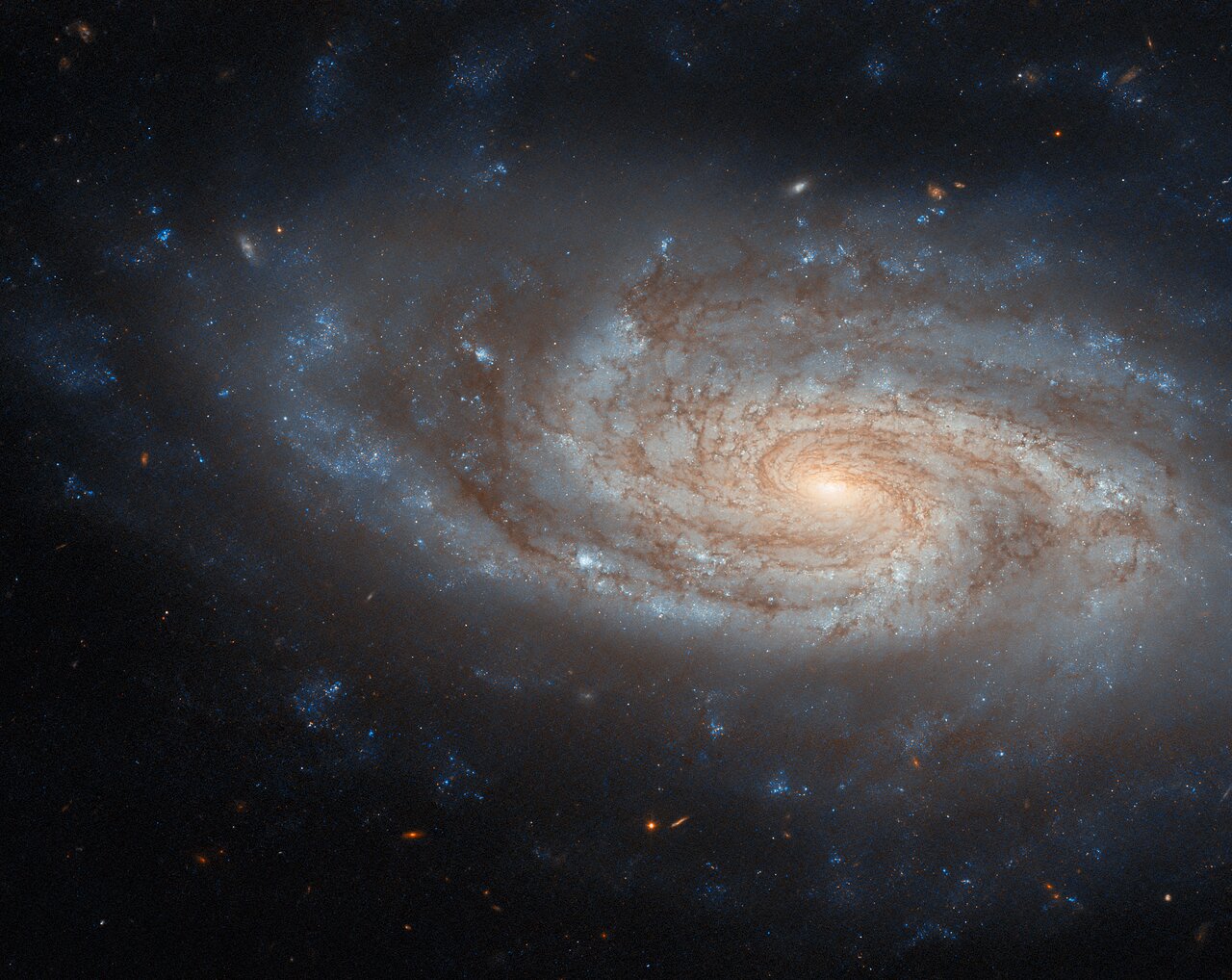
Alan Irwin Menken (born July 22, 1949) is an American composer, best known for his scores and songs for films produced by Walt Disney Animation Studios and Skydance Animation. Menken’s music for The Little Mermaid (1989), Beauty and the Beast (1991), Aladdin (1992), and Pocahontas (1995) has each won him two Academy Awards. He also composed the scores and songs for Little Shop of Horrors (1986), Newsies (1992), The Hunchback of Notre Dame (1996), Hercules (1997), Home on the Range (2004), Enchanted (2007), Tangled (2010), and Disenchanted (2022), among others. His accolades include winning eight Academy Awards — becoming the second most prolific Oscar winner in the music categories after Alfred Newman (who has 9 Oscars), a Tony Award, eleven Grammy Awards, seven Golden Globe Awards, and a Daytime Emmy Award. Menken is one of nineteen people to have won an Emmy, a Grammy, an Oscar and a Tony (“an EGOT“).
He is also known for his work in musical theater for Broadway and elsewhere. Some of these works are based on his Disney films, but other stage hits include Little Shop of Horrors (1982), A Christmas Carol (1994), and Sister Act (2009).
Menken has collaborated with lyricists such as Muriel Robinson, David Zippel, Howard Ashman, Stephen Schwartz, David Crane, Seth Friedman, Marta Kauffman, Steve Brown, Tom Eyen, David Rogers, Dennis Green, David Spencer, Jack Feldman, Tim Rice, Lynn Ahrens, Glenn Slater, Chad Beguelin, Seth Rogen, Evan Goldberg, Ariel Shaffir, Kyle Hunter, Phil Johnston, Tom MacDougall, Benj Pasek, Justin Paul, and Lin-Manuel Miranda.
see full post...Albert Laurence Di Meola (born July 22, 1954) is an American guitarist. Known for his works in jazz fusion and world music, he began his career as guitarist with the group Return to Forever in 1974. From 1976 to 1978 he played with Stomu Yamashta in the supergroup Go on three records. The 1970s and 1980s saw albums such as Land of the Midnight Sun, Elegant Gypsy, Casino and Friday Night in San Francisco earn him both critical and commercial success.
Born in Jersey City, New Jersey, into an Italian family with roots in Cerreto Sannita, a small town northeast of Benevento, Di Meola grew up in Bergenfield, where he attended Bergenfield High School. He has been a resident of Old Tappan, New Jersey.
see full post...Herman “Junior” Cook (July 22, 1934 – February 3, 1992) was an American hard bop tenor saxophone player.
Cook was born in Pensacola, Florida. A member of a musical family, he started on alto saxophone before switching to tenor during his high school years.
After playing with Dizzy Gillespie in 1958, Cook was a member of the Horace SilverQuintet (1958–1964); when Silver left the group in the hands of Blue Mitchell Cook stayed in the quintet for five more years (1964–1969). Later associations included Freddie Hubbard, Elvin Jones, George Coleman, Louis Hayes (1975–1976), Bill Hardman (1979–1989), and the McCoy Tyner big band.
see full post...The final performance of Into the Woods by Theatre 55. Sunday July 21st 5pm 2024. Music with Raymond Berg, Lyra Olson, Paul Fontara, Anthony Afful and mick laBriola.
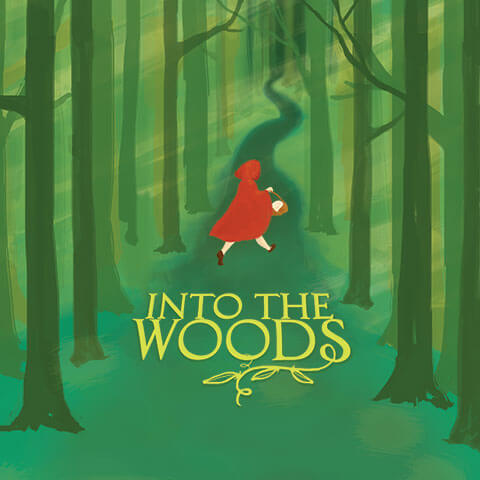
see full post...
This rock structure is not only surreal — it’s real. Perhaps the reason it’s not more famous is that it is smaller than one might guess: the capstone rock overhangs only a few meters. Even so, the King of Wings outcrop, located in New Mexico, USA, is a fascinating example of an unusual type of rock structure called a hoodoo. Hoodoos may form when a layer of hard rock overlays a layer of eroding softer rock. Figuring out the details of incorporating this hoodoo into a night-sky photoshoot took over a year. Besides waiting for a suitably picturesque night behind a sky with few clouds, the foreground had to be artificially lit just right relative to the natural glow of the background. After much planning and waiting, the final shot, featured here, was taken in May 2016. Mimicking the horizontal bar, the background sky features the band of our Milky Way Galaxy stretching overhead.
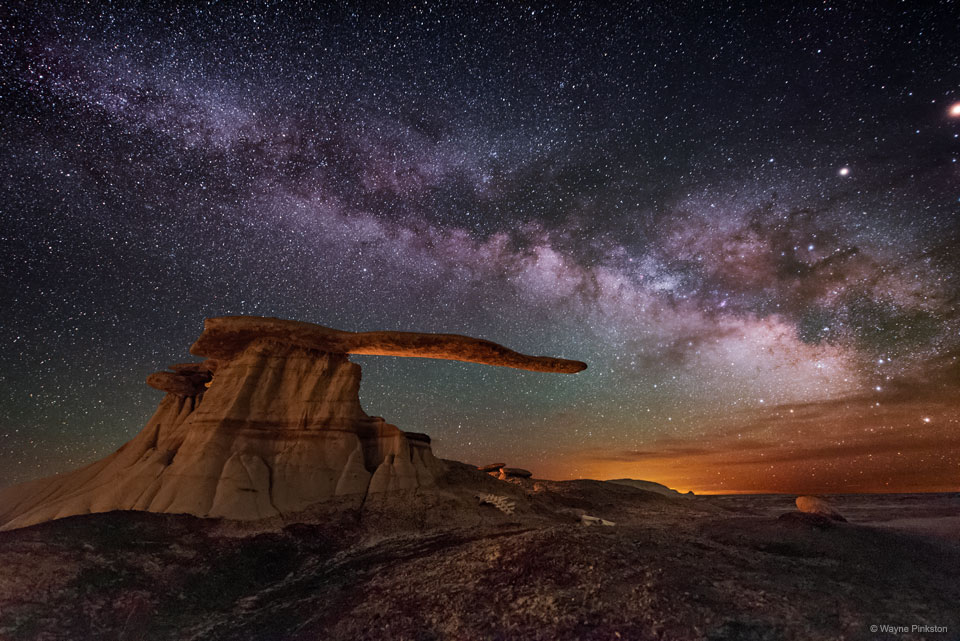
Yusuf Islam (born Steven Demetre Georgiou; 21 July 1948), commonly known by his stage names Cat Stevens, Yusuf, and Yusuf / Cat Stevens, is a British singer-songwriter and musician. He has sold more than 100 million records and has more than two billion streams. His musical style consists of folk, rock, pop, and, later in his career, Islamic music. Following two decades in which he performed only music which met strict religious standards, he returned to making secular music in 2006. He was inducted into the Rock and Roll Hall of Fame in 2014. He has received two honorary doctorates and awards for promoting peace as well as other humanitarian awards.
His 1967 debut album and its title song “Matthew and Son” both reached top 10 in the UK charts. Stevens’ albums Tea for the Tillerman (1970) and Teaser and the Firecat(1971) were certified triple platinum in the US. His 1972 album Catch Bull at Fourwent to No. 1 on the Billboard 200 and spent weeks at the top of several other major charts. He earned ASCAP songwriting awards in 2005 and 2006 for “The First Cut Is the Deepest“, which has been a hit for four artists. His other hit songs include “Father and Son“, “Wild World“, “Moonshadow“, “Peace Train“, and “Morning Has Broken“.
Stevens converted to Islam in December 1977, and adopted the name Yusuf Islam the following year. In 1979, he auctioned his guitars for charity, and left his musical career to devote himself to educational and philanthropic causes in the Muslim community. He has since bought back at least one of the guitars he sold as a result of the efforts of his son, Yoriyos. Stevens was embroiled in a controversy regarding comments he made in 1989, about the fatwa placed on author Salman Rushdie in response to the publication of Rushdie’s novel The Satanic Verses. He has explained the incident stating: “I was cleverly framed by certain questions. I never supported the fatwa.”
In 2006, he returned to pop music by releasing his first new studio album of new pop songs in 28 years, titled An Other Cup. With that release and subsequent ones, he dropped the surname “Islam” from the album cover art – using the stage name Yusuf as a mononym. In 2009, he released the album Roadsinger and, in 2014, he released the album Tell ‘Em I’m Gone and began his first US tour since 1978. His second North American tour since his resurgence, featuring 12 shows in intimate venues, ran from 12 September to 7 October 2016. In 2017, he released the album The Laughing Apple, now using the stage name Yusuf / Cat Stevens, using the Cat Stevens name for the first time in 39 years. In September 2020, he released Tea for the Tillerman 2, a reimagining of his album Tea for the Tillerman to celebrate its 50th anniversary, and in June 2023, King of a Land, a new studio album.
see full post...Conrad Yeatis “Sonny” Clark (July 21, 1931 – January 13, 1963) was an American jazz pianist and composer who mainly worked in the hard bop idiom. Clark was born and raised in Herminie, Pennsylvania, a coal mining town east of Pittsburgh. His parents were originally from Stone Mountain, Georgia. His miner father, Emery Clark, died of a lung disease two weeks after Sonny was born. Sonny was the youngest of eight children. At age 12, he moved to Pittsburgh. While visiting an aunt in California at age 20, Clark decided to stay and began working with saxophonist Wardell Gray. Clark went to San Francisco with Oscar Pettiford and after a couple months, was working with clarinetist Buddy DeFranco in 1953. Clark toured the United States and Europe with DeFranco until January 1956, when he joined The Lighthouse All-Stars, led by bassist Howard Rumsey. Clark died in New York City on January 13, 1963 (aged 31). The official cause was listed as a heart attack, but the likely cause was a heroin overdose.
see full post...
Floyd Edward “Butter” McDaniel (born July 21, 1915 in Athens (Alabama) ; July 22, 1995 in Chicago ) was an American guitarist and singer in the fields of blues , jazz , rhythm & blues and doo-wop .
McDaniel came to Chicago at the age of 15 and began his career in 1933 in the youth band The Rhythm Rascals , which debuted at the Chicago World’s Fair . A talent scout for the Cotton Club discovered him during an appearance at New York’s Apollo Theater , resulting in a longer commitment as head of the Cotton Club Tramp band led; Recordings were made in 1937 with The Tramp Band (with Lester “Pinky” Johnson and Al Cowans). From 1941 to 1954 he played in the Chicago Jump blues group The Four Blazes(in alternating line-ups with Paul Lindsley “Jelly” Holt, Tommy Braden, Ernie Harper, William “Shorty” Hill, later as Five Blazers ), which also served as the backing band for Sam Cooke in the late 1950s . The Four Blazes successfully released several 78s on Aristocrat ( Chicago Boogie , 1947) and United Artists Records such as Night Train / Rug Cutter , Perfect Woman, Please Send Her Back to Me, Mary Jo (# 1 on the R&B charts in 1952), All Night Long and Please Send Her Back to Me / Stop Boogie Woogie (1952) or as Five Blazesthe single Chicago Boogie / Dedicated to You . After the Five Blazes broke up , McDaniels bought a bar in Chicago.
For the following decade, McDaniel was a member of a rock band; in the 1970s appeared as a guitarist with one of the revival groups trading as Ink Spots . In the 1980s he played with Willie Dixon in the Big Three Trio . Recordings were made in 1991 for Delmark Records with the band The Blues Swingers , led by tenor saxophonist Dave Clark, stylistically based on the blues and rhythm & blues of the 1940s ( Let Your Hair Down!, Delmark). Shortly before his death occurred Floyd McDaniel 1994 at the Bremen Blue Festival Breminale on. He died of a heart attack on the Dan Ryan Expressway the day after his eightieth birthday . In1997, McDaniel’s album West Side Baby (Live in Europe) was released posthumously by Delmark .
see full post...